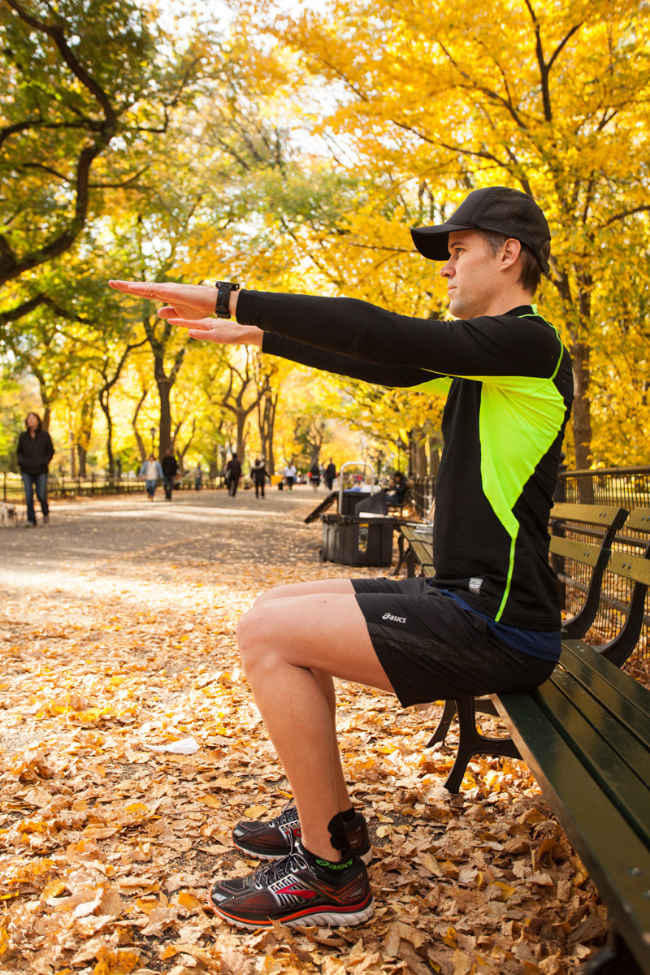Author: Daniel O'Grady is a Physiotherapist in Adelaide, Australia.
Most people know about their ITB (Ilio Tibial Band) that runs on the outside of the thigh; but not as many are familiar with the strip of muscle that joins the upper part of the ITB to the pelvis.
This small muscle is known as the TFL (Tensor Fasica Latae).
“If you’ve ever had problems with your knee, hip, lower back, calf or achilles, chances are you have some unresolved tightness in your TFL.”
QUICK ANATOMY REVIEW:
As you can see in the picture, the ITB has upper attachments to both the gluteals and the TFL. Any dysfucntion/weakness in the glutes means that the TFL needs to work proportionally harder. Gluteal inhibition is common - especially if you spend a lot of time sitting.
PALPATE THE TFL ON YOURSELF:
To feel the TFL, place your finger on your front of your pelvic bone. Slowly move down and to the outside of the thigh until you feel a ropey muscle that is the the width a finger. It may be tender to touch.
FUNCTION:
The TFL is a hip flexor, abductor and internal rotator. It works in conjunction with the gluteus medius and gluteus maximus to stabilise the leg during the stance phase of walking and running. The TFL anteriorly rotates your pelvis. Functionally, the TFL is part of the Lateral Line and the Spiral line, according to Thomas Myers in his book Anatomy Trains.
The Lateral Line
The Spiral Line
SYMPTOMS:
Overload of the TFL can lead to pain and tightness in the front of the hip. Very common is also pain and tightness in the outer part of the knee and into the ITB. This is most noticeable when walking or up and down stairs/hills.
Other symptoms:
knee and hip pain (especially outside)
the lower back and SIJ
upper back
calf and achilles
As the TFL pulls the head of the femur bone forwards, chronic increased tone is one of the prime causes of hip osteoarthritis and degeneration.
HOW THE TFL BECOMES OVERLOADED:
The TFL becomes overloaded with repeated use in the following situations:
excessive sitting, driving, kicking
walking and running (especially uphill and downhill)
cycling, swimming, kayak/canoe
meditating crossed legged in lotus position
sleeping in the fetal position
standing with a swayed back and wearing high heels too often
TREATMENT:
Physiotherapy assessment will involve a comprehensive movement assessment to determine the cause of your TFL issue.
“Short term treatment such as soft tissue massage and dry needling is very helpful, while long term building gluteal and core strength is critical to prevent a relapse. ”
TRIGGER POINT DRY NEEDLING:
Tightness and shortening of the TFL responds well to dry needling, which can de-activate the trigger points (knots in the muscle) that can form in chronic cases. The benefit of dry needling is that it can reach the deep fibers of the muscle and lead to a quicker resolution of symptoms. Dry needling is certainly an unusual feeling, but definitely beats 15 minutes of deep painful massage in that area.
SELF-CARE TIPS:
apply heat to the front of your hip 10 minutes each day
avoid sitting cross legged
avoid walking and jogging uphills and on sloped surfaces in the short-term
ensure your shoes are not overly worn
sleep on stomach or side with pillow between knees
when running - avoid over-striding and endure proper warm up and cool down
use cruise control on long car trips to stretch the legs
GRADED EXERCISE PROGRAM TO ADDRESS TFL OVERLOAD:
PART 1 STRETCHES:
FOAM ROLLER ITB
Regulate the pressure with your arms and top leg, so pain is less than 5/10.
FOAM ROLLER QUADS
Go harder along the quads. Keep breathing!
HIP FLEXOR STRETCH
Feel the stretch in the front of your hip as you tuck the pelvis under gently
FOAM ROLLER TFL
Angle your body across the TFL and roll it with medium to light pressure
PRONE EXTENSION COBRA DECOMPRESSION
Relax on your forearms, let your hips release at the front. Breathe through the diaphragm
PART 2 STRENGTHENING:
The goal is to strengthen and support the muscles around the TFL
BRIDGE
Feel a stretch in the front of your hips while your glutes activate in the back of the hips
CLAM SHELL
Ensure hips stay facing the front and you feel the gluteus medius (back of the hip) activating
SINGLE-LEG BRIDGE
Keep the bridge high as your transfer your weight to each side. Keep activation through the glutes
PUSH-UP TO SIDE-PLANK
Activate the obliques as you twist into side plank. Try x3 on each side.
PLANK
Feel the abdominals support your body. Hold 30 seconds. Keep breathing!
PART 3: POSTURE / NEW MOVEMENT PATTERNS
“For many people, the TFL becomes the muscle that is always switched on and over-active.
Try these movements, focusing on keeping your core and gluteals engaged. ”
STANDING PELVIC-TILTS
Use the abdominals to gently tuck the pelvic under. Keep the shoulders relaxed and breathe through the diaphragm. x10 per hour.
STANDING HAMSTRING CURLS
Keep the pelvis tucked under and abdominals engaged as you bend the knee by activating the hamstring. Keep the knees aligned during the entire exercise. 3 x10 each side.
REVERSE LUNGE
Feel the stretch in the front of your left hip as you stretch back and drop the knee towards the ground. Keep your spine straight while gently tucking your pelvic under. x10 each side.
SIT TO STAND SQUATS
Focus on activating the glutes and core as you come up into standing by gently pulling your pelvis under.
Stick your butt out as you slowly sit down, keeping your feet and toes in contact with the ground. Repeat 3x10






























